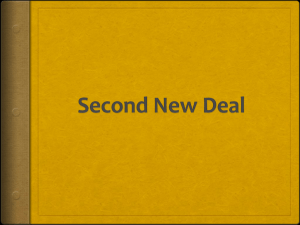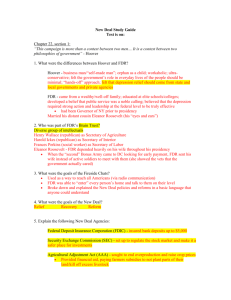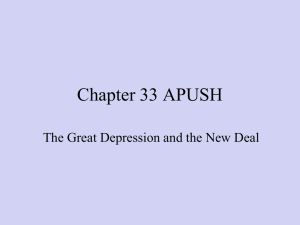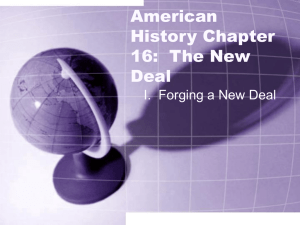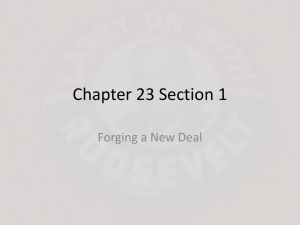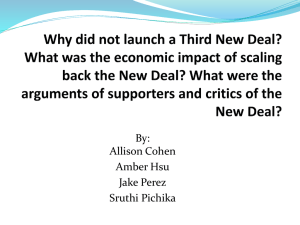conservatism and cultural diversity in the 1920s
advertisement
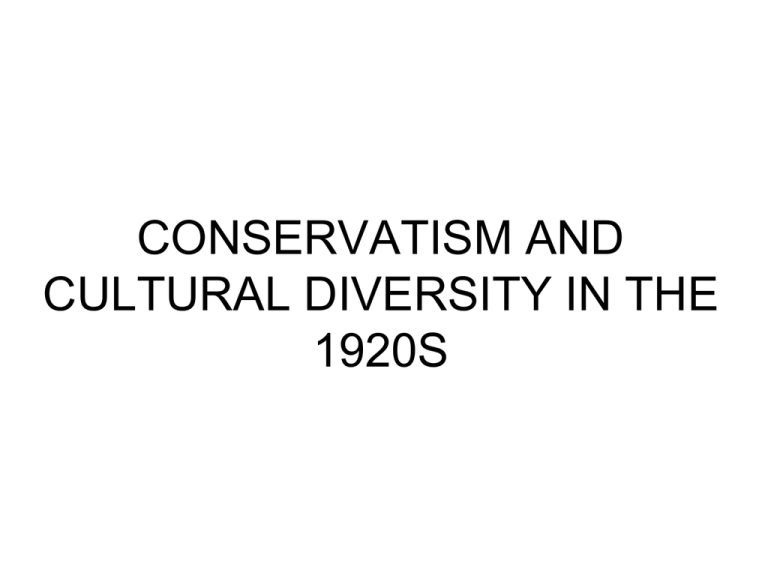
CONSERVATISM AND CULTURAL DIVERSITY IN THE 1920S Key Concepts • 1920s were dominated by conservative Republican presidents. • Americans experienced consumer activity as new massproduced commodities were made available. • Tensions prevailed between rural and urban America. • The decade witnessed a rise in nativism and racism. • The period was culturally vibrant as new forms of music and art became popular. • U.S. government persecuted radicals in the Red Scare. 1920’s Presidents • Warren Harding • Harding administration sought to cut taxes, especially for the wealthy in the Mellon Tax Plan which reduced government spending by passing Fordney-McCumber Tarrif which was so high other nations raised their tariffs which led to depression. • Widespread corruption, the most famous of which was Teapot Dome Scandal when secretary of interior Albert Fall was convicted of bribery. • He died suddenly. Calvin Coolidge • He adopted a strict laissez-faire attitude toward business – “The business of America is business.” • Under his conservative leadership, business sector flourished but farm prices slumped in the post-war years. Mass Consumerism • Economy reached unprecedented heights as nation engaged in consumer spending stimulated by the stockmarket “bubble” • Americans began to buy on credit causing many to fall into debt. • Department-store catalogs made it easier to purchase products. • Radio provided Americans a new form of entertainment and faster access to news and advertisers. • Most notable consumer item was the automobile. • Expansion of automobile led to highway construction, increased suburbanization and growth of other industries. Divisions on the Domestic Scene • Urban versus Rural – women and Prohibition • Moderate versus radical unionism – moderate unions such as American Federation of Labor experienced a decline – radical unions had growth • Science versus religion: Scopes Monkey Trial – teaching of evolution • Modern versus traditional in art forms – Harlem Renaissance by African Americans – Lost Generation writers such as F. Scott Fitzgerald. Nativism • Reemergence of the Ku Klux Klan – targets now included Jews, eastern Europeans, Catholics, radicals and unions, as well as black Americans. • Sacco and Vanzetti Trial – two Italian anarchists convicted and executed for murder despite insufficient evidence. • “Hundred Percenters” • Limits on immigration such as Literacy Test Act, Emergency Quota Act, Immigration Act, and Chinese Exclusion Act Prohibition • • • • • • • Eighteenth Amendment Volstead Act – enforced 18th amendment Speakeasies – illegal clubs Charleston Led to rise of organized crime – Al Capone Flappers Repealed by 21st Amendment under FDR. Great Depression and New Deal – Key Concepts • Extent of economic collapse for U.S. and world was unprecedented • President Hoover failed to stem decline of the economy. • FDR instituted a vast array of relief, recovery, and reform policies and agencies to address collapse of the economy. • Several New Deal programs were ruled unconstitutional by Supreme Court. Cause of Great Depression • • • • • • • • Unequal distribution of wealth. Underconsumption Overproduction Rise of protectionism – Fordney-McCumber Tariff – kept nations owing US money from repaying debt Inadequate capital investment Fragile banking system – made numerous bad loans Borrowing on margin Stock market crash in 1929. Hoover’s Response • Believed government intervention would undermine character of hardworking, independent Americans and would create a welfare system. • Localism – responsibility of local and state governments – not federal government • Voluntarism – charitable organizations would provide needs • Rugged individualism • “Too little, too late” • Responded somewhat by moratorium on war reparations and debts, Reconstruction Finance Corporation, and Federal Home Loan Bank Act Growing anger against Hoover • “Hoovervilles” • Bonus Army March – veterans camp in Washington D.C. was destroyed by General Douglas MacArthur • Farmers organized Farmers’ Holliday Association. Franklin Delano Roosevelt • “Brain Trust” – advisers – intellectuals and university professors • “New Deal” to address short- and longterm goals – Relief, Recovery, and Reform • Maintain Americans’ loyalty to the government and to the capitalist system as a whole. • Create conditions favorable to capital accumulation. First New Deal • First Hundred Days • National Bank Holiday (Emergency Banking Relief Act) • Glass-Steagall Act (Banking Act of 1933) – established Federal Deposit Insurance Corporation (FDIC) • Agricultural Adjustment Act (AAA) • Federal Emergency Relief Act (FERA) • Home Owners’ Refinancing Act • Tennessee Valley Authority (TVA) – dams in Tennessee River Valley • Civilian Conservation Corps (CCC) – young men in conservation work • National Industrial Recovery Act (NIRA) • Securities and Exchange Commission (SEC) – regulate stock market • Federal Housing Administration (FHA) Growing Disillusionment • Farmers and laborers • Conservative business leaders • Francis Townsend – wanted Old Age Revolving Pension Plan - $200 monthly for citizens over 60 • Father Charles Coughlin – National Union for Social Justice • Governor Huey Long – “Share Our Wealth” program – a home and $2,000 income for every American family - assassinated Second New Deal • Fair Labor Standards Act – set maximum workweek at 40 hours, established minimum wage, and limited child labor. • Works Progress Administration (WPA) • Resettlement Administration – brought assistance to small farmers and sharecroppers. • Rural Electrification Act (REA) – brought electricity to rural areas • National Labor Relations Act • Tax restructuring – higher income tax placed on wealthy and on capital gains • Social Security Act – retirement plan, disabled, unemployed, dependent mothers and children Keynesian Economics • Government should create additional demand by becoming a major purchaser/consumer of goods and services. • Government should encourage investments by private sector by lowering corporate tax rate. • Government should facilitate the growth of exports. • Government should use deficit spending during an economic downturn. Court-Packing Scheme • Supreme Court found some programs unconstitutional. • FDR responded with plan to increase number of Supreme Court justices from 9 to 15. • Even FDR supporters were against this idea. • Before he died, FDR would eventually appoint 7 new justices Women and Minorities Under the New Deal • End of black support for Republican party • FDR record does not reflect great concern for black population • Some New Deal programs segregated or excluded blacks • Black tenants and sharecroppers lost property when forced from their land. • Blacks tended to be hired last and first fired. • Eleanor Roosevelt greatest supporter of blacks • FDR’s record regarding women is mixed • More women entered workplace but had lower wages than men • They were laid off first • Rarely received promotions • Denied access to certain jobs so as not to compete with men • Found opportunities in government • First woman to hold a cabinet position, Frances Perkins, was appointed secretary of labor by FDR Legacy of the New Deal • FDR’s fiscal and monetary policies stimulated nation’s economy • Confidence in economy and government improved. • Effects of depression continued until World War II • Changed how Americans viewed the role of the federal government. • Federal government had increased role in people’s lives. • Created division between those who view NEW Deal and undermining states’ rights, the free-market system, and social and cultural traditions and those who believe government intervention is necessary for a stable economy. • Many of the New Deal programs still exist today.




